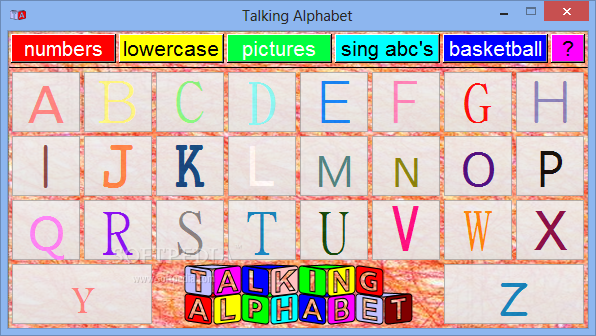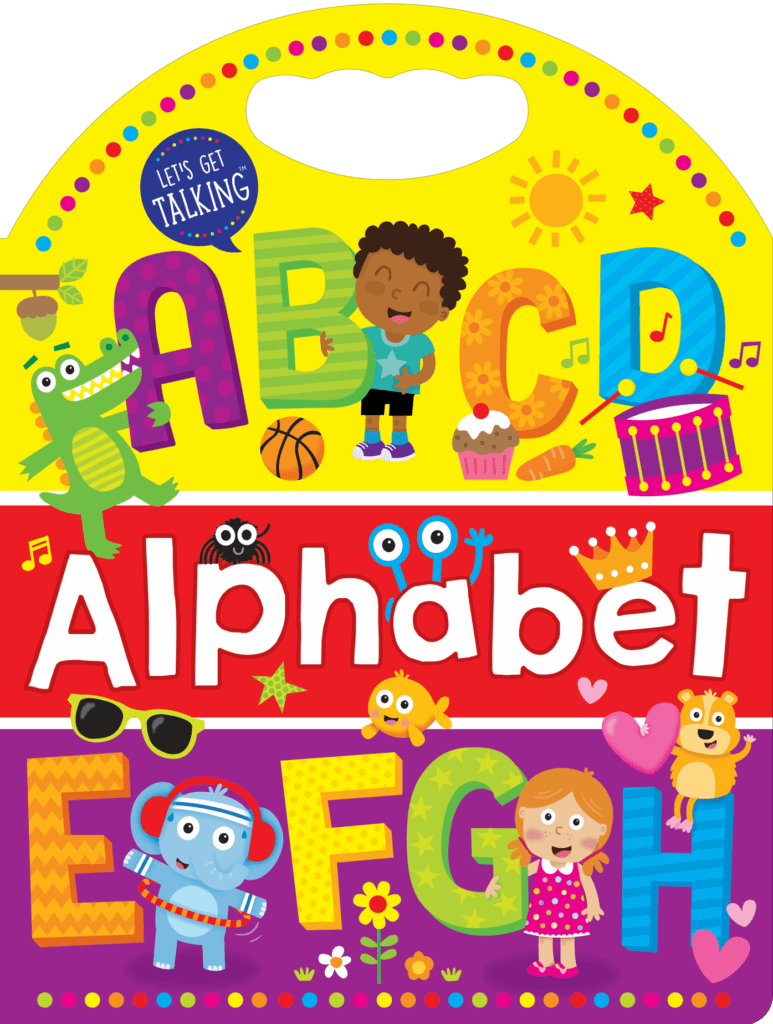

#Kids talking alphabet how to#
Teach her how to pump her legs back and forth on a swing and help her play on the monkey bars. Encourage your child to draw and make art projects with different supplies. Keep a box of crayons, paper, paint, child scissors, and glue for creative play.Help your child find items she can use to play dress up, school, or house. Teach your child her name and your name (first and last names). Teach your child to look for “helpers” if she is lost or needs help, such as parents with children, a store clerk with a badge, or a police officer.Help them practice saying ‘no’ to unwanted or unsafe touch and let them know there are adults they can turn to for help. Teach your children that they are in charge of who touches them. Unsafe touches are touches that might make a child feel hurt, uncomfortable, scared, or confused. Teach your children about safe touch, such as hugging when both people want to and touches that help keep children healthy (touches from doctors or parents).Playing with others helps your child learn the value of sharing and friendship. Ask about local play groups and pre-school programs. Let your child play with other children, such as at a park or library.For example, play card games, Tic Tac Toe, I Spy, or Hot and Cold. Play games that help with memory and attention.

Encourage your child to “read” by looking at the pictures and telling the story.Let your child help prepare the healthy foods and enjoy them together. Avoid screen time (TV, tablets, phones, etc.) during mealtime. Eat meals with your child and enjoy family time talking together.Set limits for screen time (TV, tablets, phones, etc.) for your child, to no more than 1 hour per day.Stay nearby so your child knows he is safe and can come to you for help calming as needed. Create a spot in your home for your child to go to when he’s upset.For example, play simple board games, card games, or Simon Says. Teach your child to follow rules in games.Read books and talk about the feelings characters have and why they have them. Talk about and label your child’s and your own feelings.Celebrate when he does it and try not to “fix” anything you don’t have to. For example, let him make his bed, button his shirt, or pour water into a cup. Let your child do things for himself, even if he doesn’t do it perfectly.Use words about time, such as today, tomorrow, and yesterday. For example, sing songs about the days of the week and let him know what day it is.

Use words to help your child begin to understand time.


 0 kommentar(er)
0 kommentar(er)
